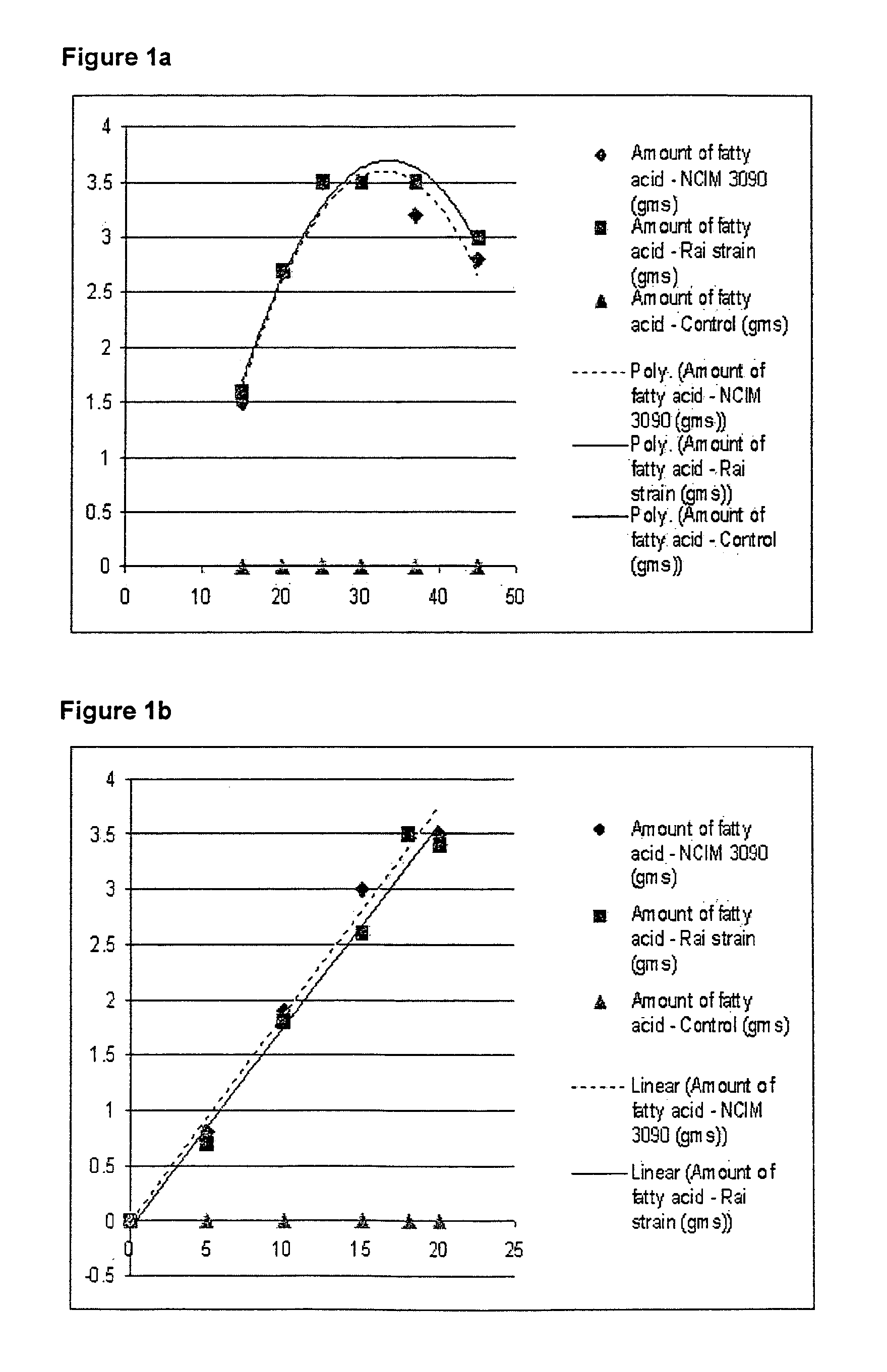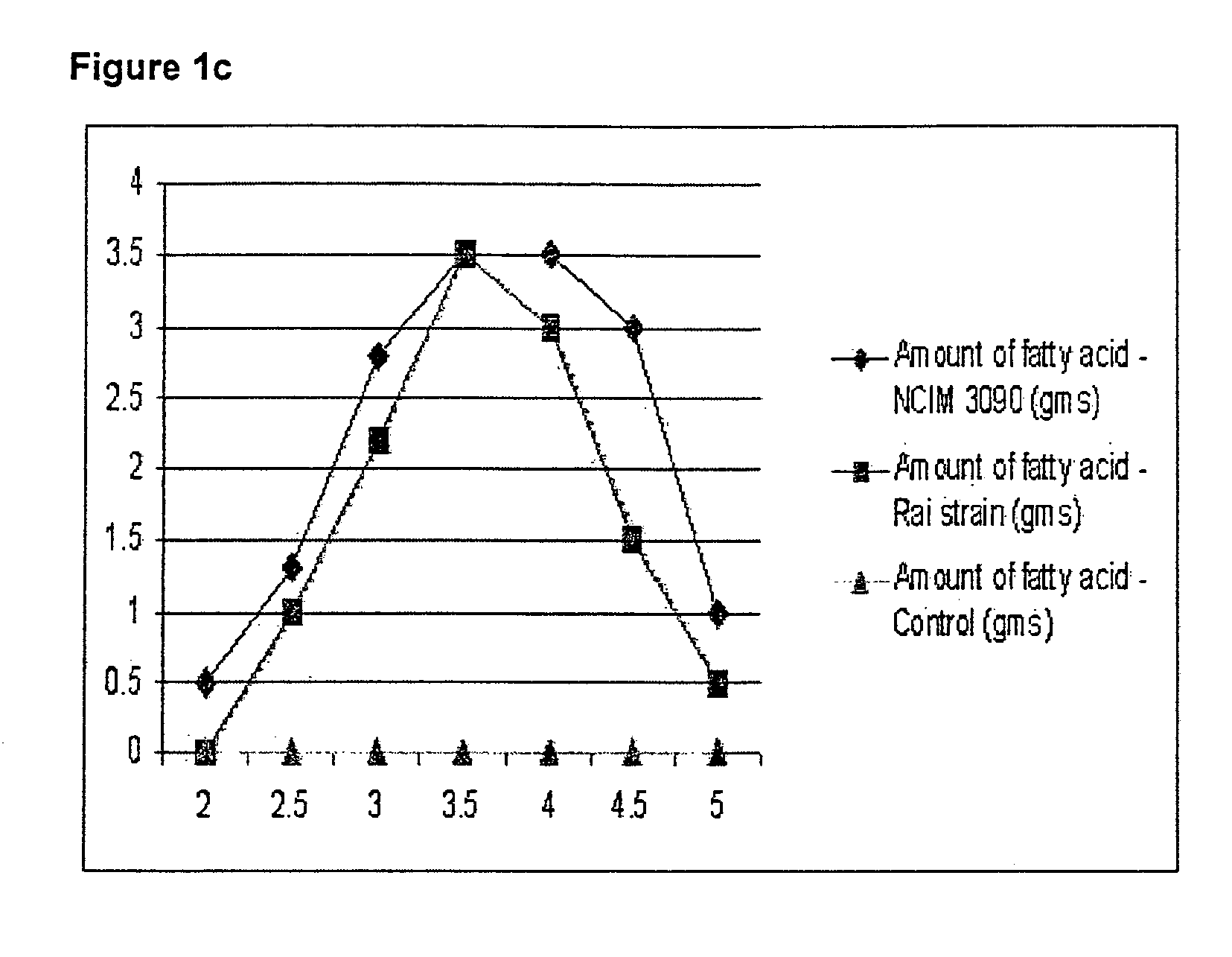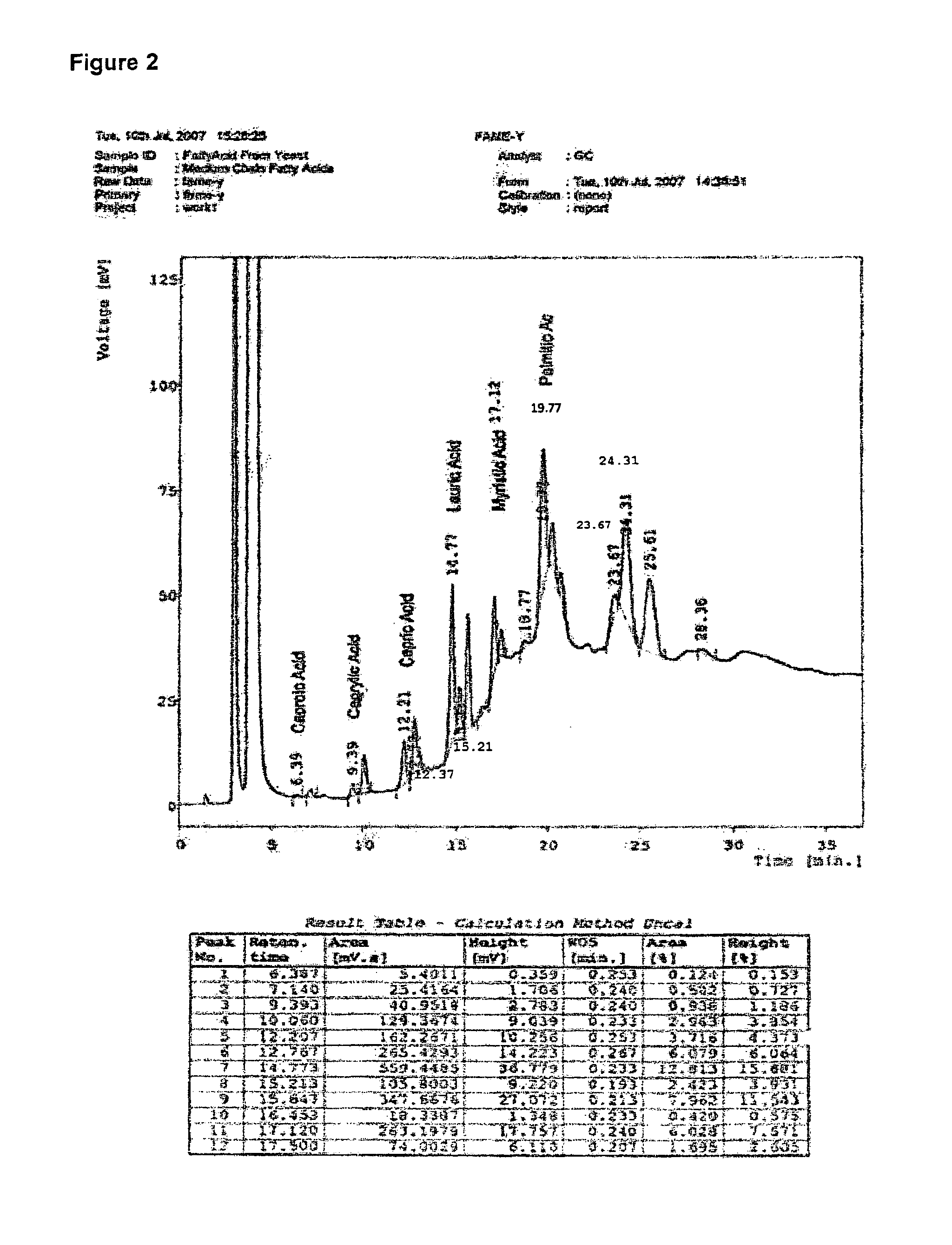Production of biodiesel by yeast from lignocellulose and glycerol
a technology of lignocellulose and glycerol, which is applied in the direction of ligases, enzymology, wireless communication, etc., can solve the problems of exerting undesirable pressure on food prices, and achieve the effects of reducing the activity of fatty acyl-coa synthetase and enhancing the expression of acetyl coa carboxylas
- Summary
- Abstract
- Description
- Claims
- Application Information
AI Technical Summary
Benefits of technology
Problems solved by technology
Method used
Image
Examples
example 1
Optimal Growth Conditions, with Respect to Temperature, Ph, Media Composition and Dextrose Concentration, for Fatty Acid Production by Yeast
[0085]Growth conditions that maximise fatty acid production in yeast were tested, with a view to identifying conditions that modulate biomass increase and those that enhance fatty acid synthesis and accumulation and / or secretion.
[0086]Two strains of the yeast, Saccharomyces cerevisiae were tested in parallel:
[0087]1) National centre for industrial microorganisms (NCIM) strain 3090, (http: / / www.ncl-india.org / ncim / cataloguedetails.jsp?mid=29&category=yeast&ncimno=3090)
[0088]2) Ordinary baker's yeast strain.
[0089]The strains were grown on Wickerham Synthetic Medium (Wickerham L J. 1951. Taxonomy of yeast. US Department of Agriculture, Technical Bulletin No.1029.) whose composition is set out in Table 1, but modified as indicated with respect to carbon source.
TABLE 1Wickerham Synthetic Medium (Wickerham et al 1951 supra) ComponentComposition (grams / ...
example 2
Deletion of FAA2 Gene from Saccharomyces cerevisiae Enhances the Production of Fatty Acids
[0104]2.0.0 Methods
[0105]The FAA2 gene was deleted Saccharomyces cerevisiae strain CEN-PK2 (MATa / MATa; ura3-52 / ura3-52; trp1-289 / trp1-289; leu2-3,112 / 1eu2-3,112; his3 D1 / his3 D1; MAL2-8C / MAL2-8C; SUC2 / SUC2) obtained from strain collection of CSM, and replaced with the 1.1 kbp URA3 marker gene (derived from Kluyveromyces marxianus) conferring the capacity to synthesize uracil. URA3 encodes orotidine 5-phosphate decarboxylase (ODCase), an enzyme involved in the synthesis of pyrimidine ribonucleotides.
[0106]Primer set one was designed to delete FAA2 gene along with 150 base-pairs flanking the FAA2 gene upstream, and 60 base-pairs flanking the FAA2 downstream in the parent CEN-PK2 strain (henceforth called WT-strain). Primer set 3, which binds near the centre of the FAA2 gene sequence, was used to amplify a ˜1300 by fragment of the FAA2 gene, in order to detect the FAA2 gene in genomic DNA from the...
example 3
Use of Candida tropicalis for the Production of Fatty Acids Suitable for Biodiesel
[0129]Candida tropicalis (DTU stain collection) was grown on Modified Wickerham's synthetic media with the specified carbon source, and fatty acids were extracted from the growth medium and cells respectively as set out under (2.0.0).
[0130]3.0.0. When C. tropicalis was grown on synthetic medium supplemented with glucose, and the secreted fatty acids extracted and analysed by GC-MS, a total of 21 peaks were detected (FIG. 13). The most prominent peak, corresponding to 35% of the total extracted fatty acids, had a retention time of 28.84 minutes, identified as palmitic acid. The yield of saponifiable fatty acids after organic extraction was 7.5 ml per 50 of medium. The yield of palmitic acid was 50 ml / litre of the medium.
[0131]3.0.1. When C. tropicalis was grown on synthetic medium (Table 5) supplemented with 5% glycerol, and the secreted fatty acids extracted and analysed by GC-MS, a total of 19 peaks w...
PUM
| Property | Measurement | Unit |
|---|---|---|
| Fraction | aaaaa | aaaaa |
| Temperature | aaaaa | aaaaa |
| Temperature | aaaaa | aaaaa |
Abstract
Description
Claims
Application Information
 Login to View More
Login to View More - R&D
- Intellectual Property
- Life Sciences
- Materials
- Tech Scout
- Unparalleled Data Quality
- Higher Quality Content
- 60% Fewer Hallucinations
Browse by: Latest US Patents, China's latest patents, Technical Efficacy Thesaurus, Application Domain, Technology Topic, Popular Technical Reports.
© 2025 PatSnap. All rights reserved.Legal|Privacy policy|Modern Slavery Act Transparency Statement|Sitemap|About US| Contact US: help@patsnap.com



